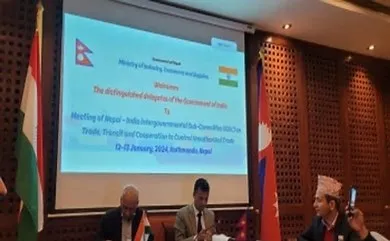Life in the city paints a complex picture. Just as often as we think of urban areas as being plagued with inadequate amenities, low standards of living, and inequitable distribution of resources, we also associate them with efficient transport networks, unmatched housing schemes, advanced and technologically-backed management systems, and so on. So why does this dichotomy exist?
As cities expand, balancing population distribution with development drives becomes critical. If not regulated, urban growth yields low-density developments, which can severely affect citizen’s access to services and amenities. For instance, only 17 per cent of the people living in Bhopal, the state capital of Madhya Pradesh have access to all six amenities deemed as essential: schools, healthcare, fire emergency services, parks and open spaces, public transport, and non-motorized transportation.
In this scenario, creating compact cities is key to mitigating urban sprawl and its subsequent challenges. Compact Cities are dense urban settlements that facilitate proximate development and low carbon growth, and encourage high per-capita access to existing urban amenities, public transport, local services and jobs.
How can we develop compact cities?
Falling population density in cities is cause for concern. For instance, Jaipur, Rajasthan has the geographical capacity to accommodate its growing population till the year 2025. Further analysis indicates that existing land capacity may serve till 2050 without expansion if appropriate infrastructure is made available. This excess capacity can be attributed to indiscriminate development along the major transit corridors of the city, sprawling away from the urban core. However, most of the newly developed areas are poorly serviced by municipal facilities. In order to bring them into the urban fold, employment or livelihood opportunities must be created in close proximity to housing zones. Likewise, all future proposed housing layouts must include provisions for informal economic activity.
In the cases of Jaipur as well as Bhopal, reducing the distance between residential and commercial zones is essential to promote compact development. In fact, reconfiguring our cities to create compact pockets of optimal population density is the way forward to tackle a large number of urban challenges. From the very point of conception, policies and development regulations must be adapted to allow for higher-density urban expansion zones. Creating public housing or affordable housing schemes as infill development is another way to optimise population distribution across a city’s fabric. In all these approaches, creating a balance between core and peripheral population is crucial.
Compact Cities and Low Carbon Development
Unevenly scattered and sprawling development leads to increase energy consumption, and consequently creates a larger carbon footprint. For instance, since residents in peripheral urban areas have limited access to public transport systems, they often travel long distances for work, education and recreation using private vehicles. Increased travel times as well use of private vehicles both directly lead to higher GHG emissions.
As observed in Guntur, the city’s transportation sector contributes 25% to its GHG emissions. This has been attributed majorly to the scattered and sprawling development patterns in the city which affects service coverage of public transport facilities. Citizens mainly commute through private vehicles, followed by auto-rickshaws and privately operated city bus services, all of them use fossil fuels. To reduce this dependency, low carbon development concepts can complement compact city principles to bring down emissions in the city. As part of this approach, Guntur’s mobility network must be developed to accommodate multi-modal transportation, ranging from city-wide bus networks to safe and inclusive walking paths and cycling tracks.
Impact of compact city
Compact city development can help revitalise existing urban cores. By making the most out of underutilised urban spaces – through the introduction of innovative housing typologies, for instance – compact city development can create vibrant mixed-income zones. Mixed-income zones promote community welfare and safeguard neighbourhoods against gentrification. With diversified housing options introduced as part of infill development schemes, cities can reach the goal of densification while also integrating urban populations especially those that are marginalised.
Through place making initiatives, underutilised pockets in the city can be transformed to supplement civic services and amenities. These amenities would then create employment opportunities, reducing the need for residents to travel to the city centre. Connecting peripheral urban nodes to city centres helps maximise land efficiency; shorter travel times may also improve women workforce participation and accessibility. In this manner, not only do compact city development strategies discourage unsustainable ribbon development but also help in ensuring safety and equity among the city’s residents.
As urban populations swell, compact city development is the need of the hour. Through effective policymaking, urban areas can be primed to operate at maximum efficiency. Revitalised urban cores and infill development schemes can ensure that all inhabitants of a city have equal and unencumbered access to civic amenities, services and resources. Compact city development can also help curb air pollution and help in protecting a city’s natural assets. All in all, compact planning strategies are our best bet at creating sustainable and resilient cities.
Mansi Sachdev is a sustainable, inclusive and resilient urban development practitioner

















